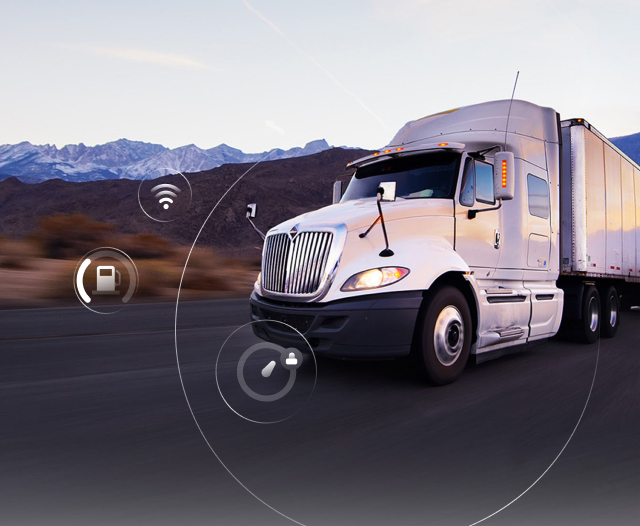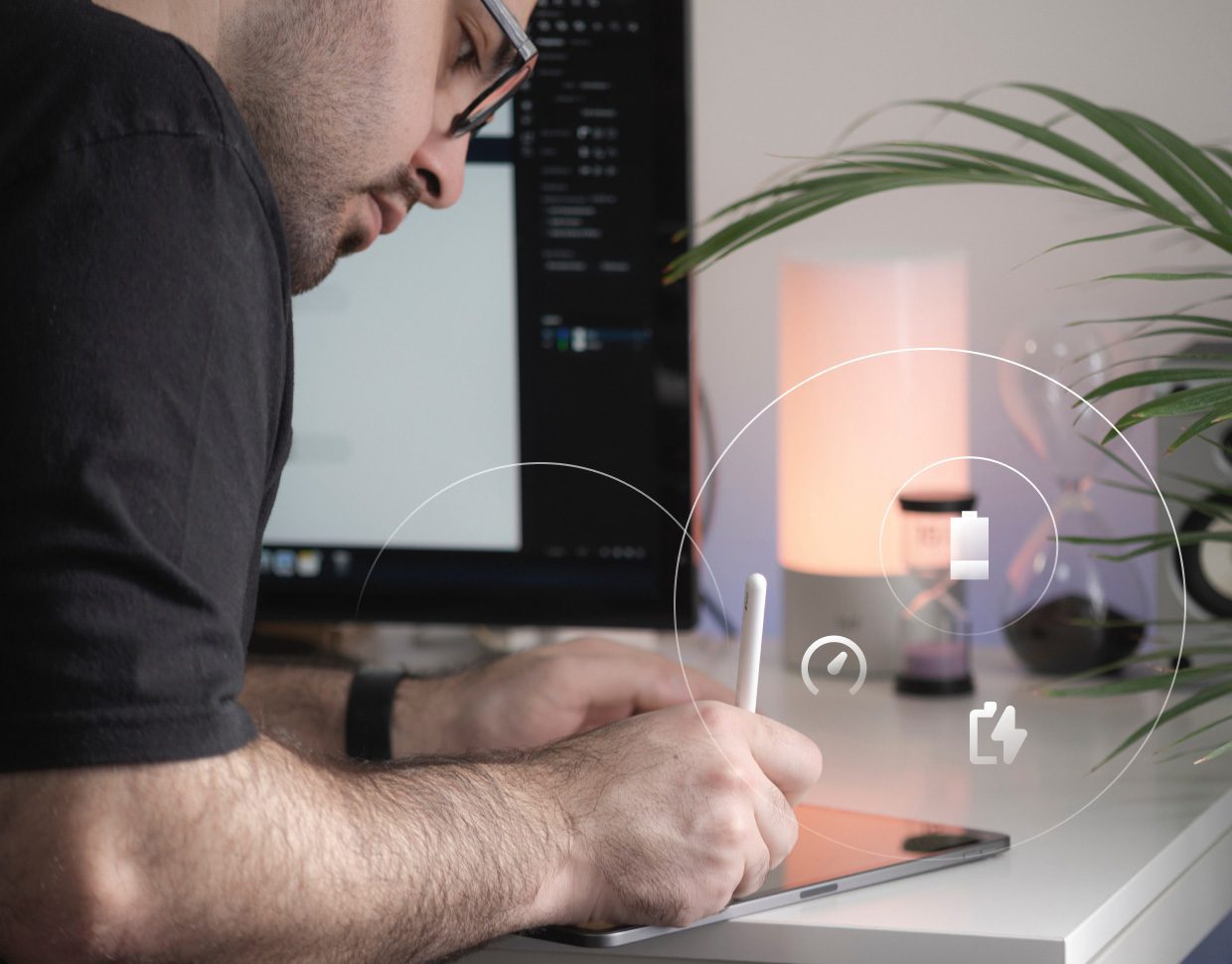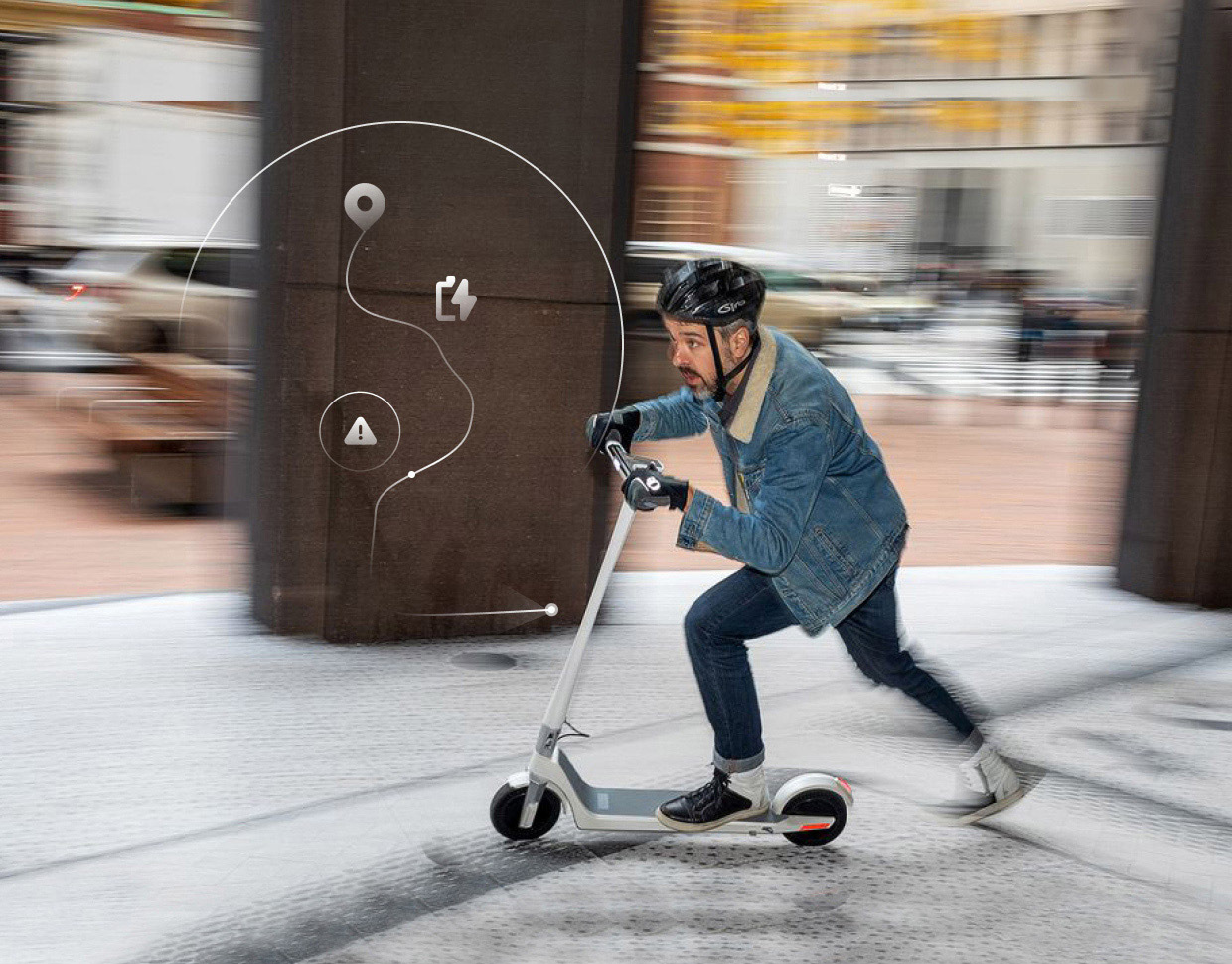Did you know electric toothbrushes were initially made for people with limited strength and mobility? Today, they're found in millions of homes as dentists quickly noticed how effective they were and began recommending them to everyone. This is just one of many examples of inclusive design and how it benefits us all.
You might not realize it but we all benefit from products that may have been initially designed for people with disabilities.
What if we all started to adopt an inclusive mindset to create more innovative products like these? By nature, thinking inclusively pushes us to think beyond the obvious solution to discover better ones. It’s not only the right thing to do. It can drive immense business growth and technological development. Here’s what you need to know.
What is inclusive design?
Inclusive design is a methodology that considers, addresses and derives inspiration from the full range of human diversity. This means including and learning from people with a range of perspectives and disabilities. The inclusive mindset embraces diversity and aims to find many solutions to problems and prevent potential users from feeling excluded.
Inclusive design vs. universal design vs. accessible design
Inclusive Design is not the same thing as Accessible Design or Universal Design. While Inclusive Design takes accessibility into account, Accessible Design is focused on the needs of people with any kind of disability and aims to comply with a set of norms and regulations. Universal Design also takes accessibility into account, but it aims to create a single solution that can benefit all users.
On the other hand, Inclusive Design not only takes into consideration people with disabilities but also people that have been historically marginalized in a particular context, such as LGBTQ+ communities, elderly people, people of color, women and immigrants. We provide a high-level summary below:
- Universal Design: one-size-fits-all
- Accessible Design: solving for the needs of people with disabilities
- Inclusive Design: solve for one, extend to many

In a nutshell, Inclusive Design challenges businesses, pushing them to think outside the box and truly consider every possible interaction for their users. This does not mean modifying or adding another target group. It means observing the target group and identifying different scenarios within it. If your target audience were pregnant women in Germany — for example — the needs of high-income and low-income individuals could be very different which is why you should consider both.
This helps companies explore the full range of possibilities within their target audiences and, in this way, create better solutions for them.
The end of the “average”
If you think there’s such a thing as an “average user” think again.
In the 1950s, the United States Air Force (USAF) was worried about rising crashes. Despite improvements in safety technology, accidents were increasing. After much research and analysis, they landed on the issue – the one-size-fits-all cockpit.
This dates back to 1926, during the first major standardization of airplane cockpits. They built these based on what was seen as the” average” height and weight of a pilot at that time, creating one standard and fixed design. Fast forward to 1950. The USAF collected measurements from 4,063 pilots and found out that not one of them matched all 10 parameters of the “average man” from the original study.
The solution was simple. They put the idea of the “average” user behind them. A new design allowed the seats to be adjusted in different ways, dramatically reducing the accident rate and opening the opportunity for more people to be pilots.
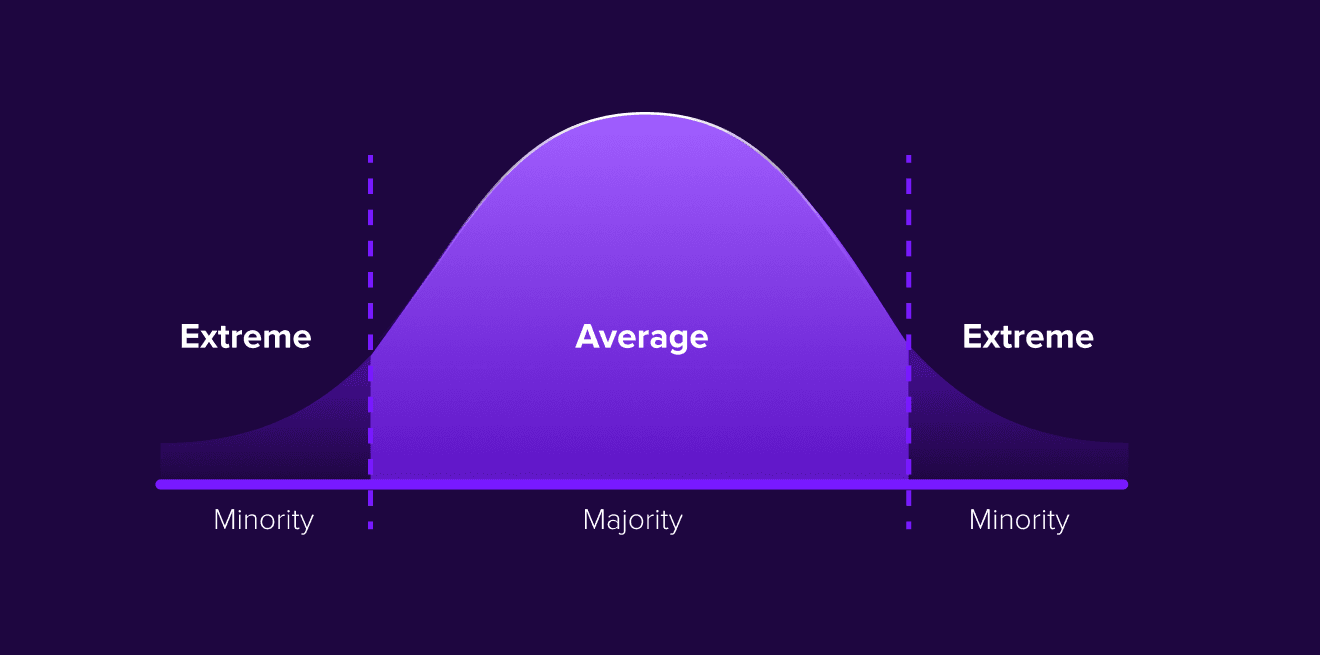
Even today, businesses strive to create products geared to sell to as many people as possible, making them fall prey to the same “average user” myth. The USAF example shows that by trying to build a product that fits everyone, they created something fit for no one. Ultimately, the larger the variety of experiences we consider when designing, the more the product can benefit all users.
Everybody is in a constant stage of change. Maybe you didn’t get enough sleep last night. Or perhaps a friend just injured himself. By designing inclusively, we have better chances to benefit users as they change and not just in “ideal” situations.
How businesses benefit from inclusive design
You might be thinking, “We would love to apply Inclusive Design, but there is no time and not enough budget if our target audience is not people with disabilities.” However, designing inclusively is a revenue driver, as well as an ethical responsibility and creative opportunity. Here are just a handful of reasons why inclusivity should be a business priority:
Cost and risk reduction
According to Cambridge University, understanding the diverse range of users can reduce the risk of expensive problems later in the product development lifecycle. Identifying issues before product engineering and launch can also significantly reduce the costs of changes made after conceptual design and can increase the efficiency of your workflow.
Widen your market
Research indicates that the “disability market” comprises 1.85 billion people with $1.9 trillion in annual disposable income. Their friends and family make up another 3.4 billion people. In total, they control over $13 trillion in annual disposable income, making it the third-largest economy globally and not too far behind China.
In short, “minority groups” are not so minor after all. Inclusive product design enables you to tap into this market and expand your user base. Let’s take one example: audiobooks. First designed to assist blind readers or those with limited eyesight, audiobooks have ballooned into a $3.3B industry growing at 24.4% CAGR.
Concurrently, exclusion even can and does happen to your target audience. No matter who your users are, it’s like they’ve experienced some form of exclusion in their lives. One of the biggest examples we must consider is our rapidly aging population. 10,000 people turn 65 every day. Many people are and will be experiencing age-related disabilities — physical or cognitive. So the products we build today should be able to evolve and benefit us even when we are older to create lasting consumer relationships.
Creating a positive impact on society
Businesses can no longer separate their commercial and social impact. CSR is more important than ever to distinguish your brand and grow your business. Its benefits include better brand recognition, operational cost savings, increased sales and customer loyalty.
There are so many excellent examples of how embracing Inclusive Design is a win for your business and the world. For instance, Logitech created the Adaptive Gaming Kit to make gaming more accessible to people with disabilities in 2019. The reaction of customers was incredibly positive and the product has been a smashing success. It made gaming more inclusive, boosted sales and strengthened Logitech’s reputation as a leader in breakthrough tech.
Innovative products for “extreme users” improve the experience for all users
Still not convinced? Another reason why designing for “extreme users” instead of the “average” ensures mutual benefit is because it can fuel inspiration for innovation.
Extreme users are “those on the margins of a challenge or solution who can provide unique insights because of their special needs, perspectives, or actions.” By solving more problems like these, you could potentially invent new ways of doing things, and even create entirely new markets.
Did you know that one of the earliest iterations of the typewriter was designed to assist blind people? In the early 1800s, Pellegrino Turri created a working typewriter for his friend Countess Carolina Fantoni da Fivizzano. She was blind and wanted autonomy and privacy and that’s what the device gave her. In fact, some of these letters still survive today and include interesting accounts of the Countess learning how to use the machine.
When we refer to “extreme users,” we’re describing people at the ends of the use of the product/service bell curve. Since they are outside of the “peak,” they’re rarely ever taken into account. They usually demand more time during the product creation process, since they’ll have different requirements to fulfill their needs. However, it will become quickly clear that needs unique to them can actually benefit a broader range of users.
As such, empathizing with extreme users opens a gateway to a creative flow within your team. By thinking about these situations, people are driven to think beyond the obvious solutions, reaching more innovative and exciting ideas. As UX Designer Beatriz González Mellídez mentions in her article “Sometimes, we limit ourselves with the average options when there can be a great range of opportunities on the sides.”
Permanent, temporary and situational: understanding disability
Not all disabilities are permanent. They can be classified into three categories: permanent, temporary and situational.
Permanent disabilities will not change or improve over time. They also do not change based on the environment. The when and the where remain the same. For example, somebody who was born blind or lost their eyesight in an accident has a permanent disability that would stop them from being able to drive independently.
Temporary disabilities are those that will change or improve over time. Where you are doesn’t matter. But time is a major factor such as recovering from a broken leg.
Situational disabilities are a little more difficult to understand, and thus often overlooked. You would not usually refer to them as disabilities, but are scenarios in which one may need similar accommodations as somebody with a permanent or temporary disability. This isn’t related to time, but particular instances. For example, imagine distracted drivers answering a message on their phone, preventing them from keeping their eyes on the road.
We’ve all experienced situational disability before in our lives and have benefited from products that were designed for people with permanent or temporary disabilities. For instance, if you’re in a subway, forgot your headphones and want to watch a video on your phone, you were situationally “deaf” to the content on your phone. In this case, you benefit from auto-generated captions that were created for deaf and hard-of-hearing individuals to assist comprehension.
Inclusive UX design in the automotive & mobility industry
Let’s take a look at what Inclusive Design looks like in action through the lens of our Automotive & Mobility practice. There are so many ways to harness Inclusive Design to create safer, more convenient and personalized automotive experiences. This was our focus when we created inclusive in-car HMI concepts that improve the lives of users with permanent, temporary or situational disabilities.
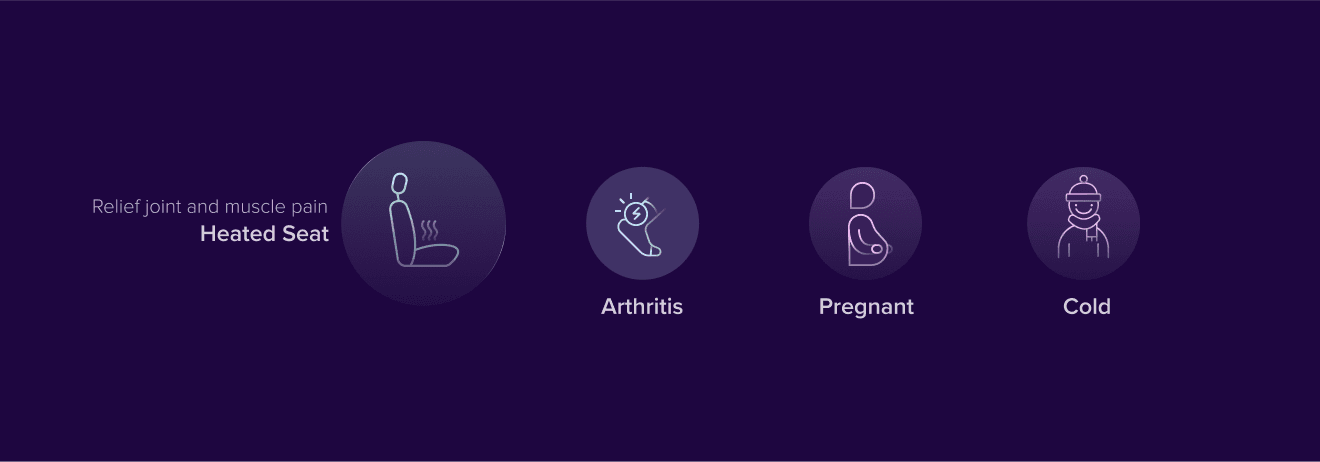
As shown, through one automotive design feature, numerous people can benefit. Somebody with a permanent condition like arthritis can benefit from a heated seat that relieves joint pain. Likewise, a woman in the last stage of pregnancy who could be considered temporarily disabled could receive lower-back pain relief from it. Finally, somebody who wants to simply warm up on a cold day can benefit. What’s clear is there’s an advantage for everybody.
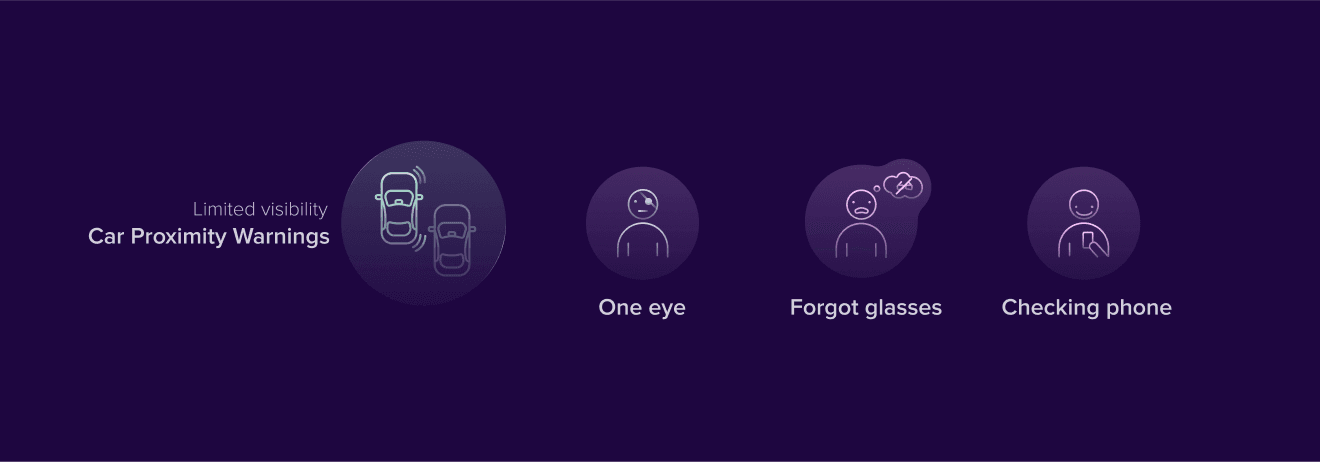
Next, we thought about sight. In the same way, a visually impaired person can benefit from proximity sensors that generate distinct visual and auditory warnings, nearsighted drivers that forgot their glasses at home or a driver checking GPS directions could also gain from these types of warnings due to their temporary and situational “sight disability.”
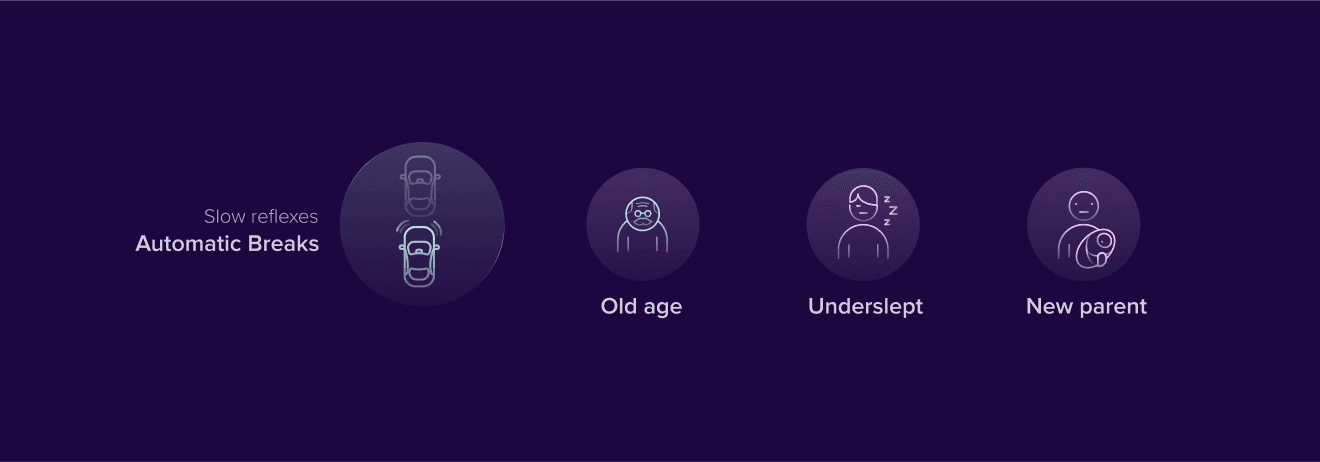
Or some people may have slower reflexes. Activating automatic brakes when the car is within a certain distance from the one in front of it could prevent a collision. Most healthy young adults don't need this assistance. However, if a person hasn’t slept enough the night before or is perhaps dealing with a crying child, they could benefit from added automatic safety measures that help reduce the impact of distracted driving.
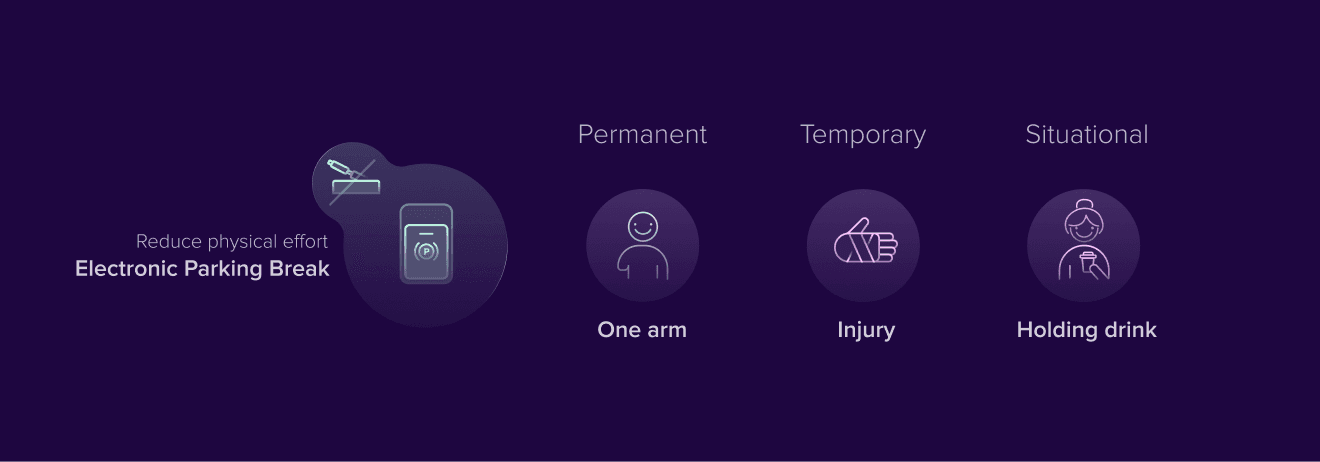
Looking at limited mobility we can see how an electric parking brake could help somebody who is without an alarm as they’re more user-friendly. It similarly assists somebody who may be injured with reduced physical mobility. Or maybe the driver is just holding a drink and needs a little assistance. Whatever the situation, it's helpful for people.
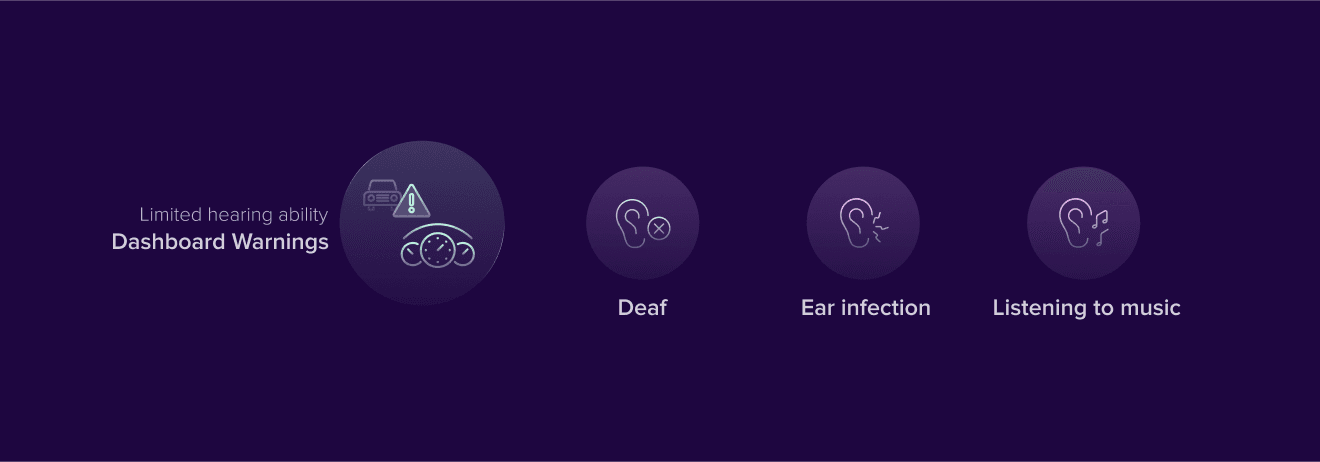
Finally, a deaf person could benefit from a dashboard with clear visual alerts. One impactful example would be emergency siren detection and notifying drivers with a visual cue. Likewise, somebody with an ear infection or a person listening to music could be assisted with these types of alerts.
Automotive digital design is just one area you can harness Inclusive Design to create better products. What we ultimately see is that by considering more user scenarios, you create a better experience for everyone.
How to start harnessing inclusive design
What do you do with all this knowledge? We have distilled some insights from Kat Holmes’s book: Mismatched: How Inclusion Shapes Design and our experience to help you start putting it into practice. Whether you’re designing a physical or digital product or service, these recommendations will help you take an empathetic, user-centered approach:
Inclusive design toolkit of best practices
- Remember to explore the needs of the minority groups within your target audience instead of staying in the “average” user area.
- Imagine hypothetical use cases. Identify which abilities a user needs in order to interact with your product. What barriers could arise? Would your product still work if your user broke their arm? Could they use it under stress? Could they use it in the dark? As an initial exercise, try imagining what it would be like for someone with a disability to use your product.
- When designing for a specific user, think about how this user will change over time. Accidents and aging are inevitable.
- Don't limit your target audience to one person within a target group. Explore and empathize with all kinds of users. Widening perspectives will make you think outside the box for more innovative and more human solutions When doing user research, approach different people to ensure a variety of perspectives.
- Observe your business and think of products or practices that exist due to Inclusive Design thinking.
Things to avoid for the inclusive design process
- Avoid having a superhero mindset. Feeling pity and being stereotypical towards minority groups is not the same thing as being inclusive. Focus on getting to know the user and truly listening to their needs.
- Avoid making decisions based on assumptions. No matter how many years of experience a design team has, they might not have the experience of what it’s like to live the life of a person with a disability, come from a minority group or be outside of what’s called “average.”
- Avoid sticking to patterns that have allowed other businesses to grow. Strive for change and the true benefit of your users.
Embracing inclusive design
Shifting towards an inclusive mindset is not immediate. Understanding Inclusive Design takes practice, consistency and time. However, getting started is quite simple. Try questioning your surroundings and think about which products, platforms and services are inclusive. When working with design teams, think beyond the “average” user. How do “average” users look when they break an arm? When do they get pregnant? What abilities do they need to interact with your product, and what happens if they lose one of them?
Inclusion begins where selfishness ends. Widening the scope for design research and adopting inclusivity will not only benefit your potential clients but will also enhance your business and set your company apart from the others. Have a broader perspective. Think beyond the average user. Craft truly holistic and inclusive products that will drive your success.
Get in touch!
If you’d like to discuss how to make your products and ideas more inclusive, we’d love to hear from you. Connect with our Design experts to learn more.



